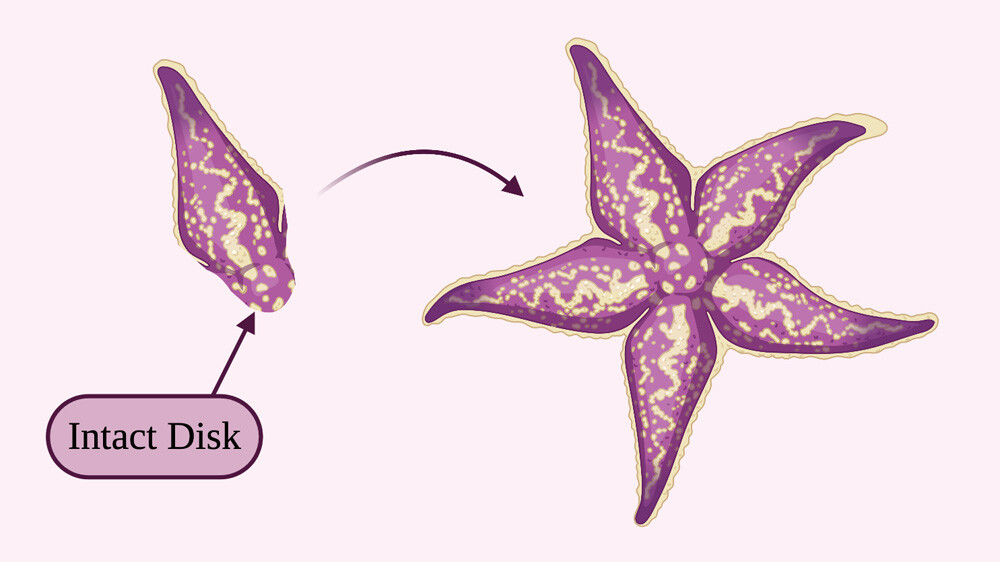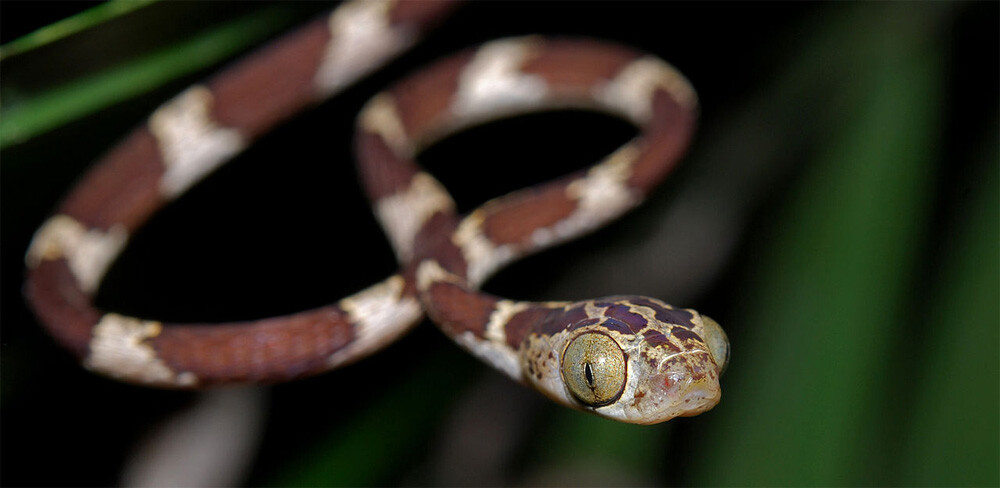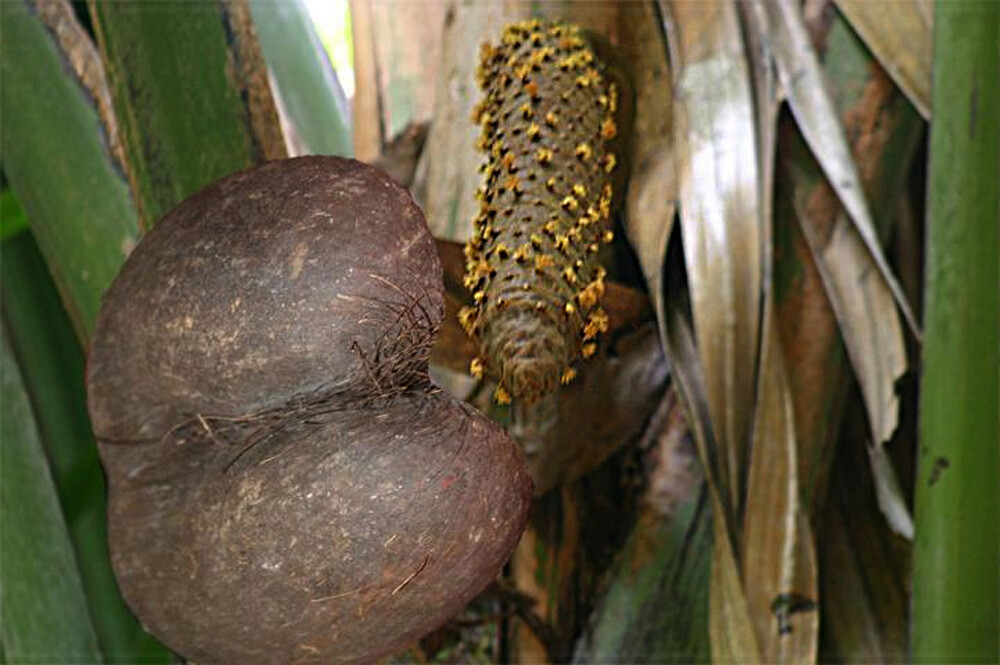5 Silly Scenes That Show Mother Nature Is Drunk

Nature is awe-inspiring. Most of the time, anyway. But sometimes it’s stupid. And that’s OK. The following organisms are amazing evolutionary outliers and also potentially proof that some supremely advanced entity is screwing with us.
The Granulated Sea Star Looks Like Five Dicks
Here’s your daily dose of pedantry: starfish aren’t fish. They're members of the phylum Echinodermata, meaning spiny (echino) skinned (derm) invertebrate sea creatures. One echinoderm worth noting is the granulated sea star, Choriaster granulatus, who lives in reefs and snacks on coral polyps and dead things. Initially, it looks like any old sea star:

Until …
Boom, dicks! Incredible.
Members of the class Asteroidea (sea stars) are also notable for their ability to reproduce both sexually and asexually, depending on the circumstances. Actually, given their insanely impressive ability to multiply, it’s surprising that the entire Earth’s surface isn’t a crawling starfish orgy. These unassuming animals are, in some respects, invincible. Lost an arm or two? No problem, it can just regenerate. Lose almost its entire body? Still no problem. A starfish can fully regrow from a shred of its former self, though this typically requires that a portion of the central disk still be present.

Their regenerative feats are as much possible due to what sea stars don’t have. They do not possess lungs; oxygen just diffuses across their body surface. Similarly, they don’t have a traditional circulatory system with blood, but just a swirling of seawater through their bodies. A central nervous system? Fuggedaboutit. They do not have a centralized command center. If they did, losing it could mean death. Rather, they have “nerve nets” that radiate through their bodies.
Sometimes, when sea stars feel like it, they can split themselves via “fission” to increase their population. Therefore, the loss of an arm may not be a net loss at all since that limb could regrow into a new (cloned) sea star, while the individual that lost the limb simply grows it back. Net result: two starfish. And any attempt to kill the dick-star by cutting it into bits will only result in an army of dick-stars. Pissed-off ones.
The Blunthead Tree Snake Flips Physiology On Its Head
Mother nature didn’t bless her slitheriest creation, the serpents, with a strong sense of sight. Despite their efficiency at subduing lackadaisical ecotourists, most snakes have crappy vision. So they use their superb sense of smell or fine-tuned perception of vibrations to perceive the world. Unless they're the blunthead tree snake. Unlike its smooth-skin kin, this is a visually reliant reptile and that fact is immediately obvious:

The blunthead tree snake reaches up to a few feet in length and inhabits the moist areas of the central and south Americas. It’s scientifically known as Imantodes cenchoa and less formally as Imantodes Don Knotts-ia. It sports a lithe lollipop-like figure, with a slender body topped by a big head harboring giant eyes that account for about 25% of its dome-space. As might be intuited by its peepers, the blunthead T.S. is nocturnal and most active during moonlit hours. It’s also arboreal, spending much of its time among low-lying trees or within leaf litter, spotting prey from above with its protruding, vertical-slitted sight organs.
So, it lazes about all day then spends the night in a frog-and-lizard-devouring frenzy. Not a bad life.
Coco De Mer Is The World’s Largest, Most Ass-Tastic Nut/Seed
Coco de mer palms easily top 100 feet and boast the world’s gigantic-est fruit (or nut) and seed, with the heaviest recorded specimen surpassing 90 pounds. Coco de mer is dioecious, with different male and female plants required for reproduction. The nut or seed from the female plant, sans husk, is a dump-truck-ass Hall of Famer:

The male plant’s flowers develop into dick-like catkins more than 3 feet long. Photographed together, they require an NSFW tag:

The seed’s size is a quirk of evolution. Isolated island organisms tend to grow smaller or larger, and these asstastic examples grew larger to store more nutrients and compete with sibling seedlings, since their home harbors no rival species to compete with. Unfortunately, the unique but finicky coco de mer is endangered, with only about 8,000 mature individuals. It doesn’t help that it’s doubly threatened. First, its nut/seed is highly coveted by tourists, thanks to its callipygian nature. Second, the kernel inside the nut is considered an aphrodisiac in Asia, again due to its voluptuousness.
The “love nut” has inspired a wealth of lore. Purportedly, on stormy nights, the trees furtively uproot themselves to have anthropomorphic sex, and any witnesses to this ungodly act are struck blind or dead. Even its name is rooted in lore—the washed-away fruits sink in the ocean, decay, then rise from the waters, as if released by underwater palms; so coco de mer translates to “palm of the sea.” Portugal’s greatest bard, Luís de Camões, even wrote it a poem. Seems odd. Until you remember that most art is inspired by juicy asses.
The Only Marine Iguana In The World Sneezes Salt
The Galápagos' Amblyrhynchus cristatus is the world’s only marine iguana. Its land-bound ancestors drifted from South America millions of years ago, and generation after generation evolved into their current aquatic lifestyle. At one point, nature bestowed it an efficient, novel, and silly way to bypass its most ubiquitous environmental obstacle: all the salt. These waterlogged sea-guanas have special glands that clear their blood of salt, which is then sneezed out in hilarious fashion:
The salt often rains back down on their topsides, bedighting them with salty crystal crowns and white crystalline armor.
They’re also herbivorous, though placing vegetarians in such barren, lava-scorched environs may seem a cruel trick of fate. The iguanas could try to pilfer the sea-greenery used as nesting material by flightless cormorants, but not without incurring an onslaught of head-biting and tail-pecking. Luckily, there’s plenty of nutriment hiding below the waves. Thusly, these are the only lizards in the world to derive sustenance from the bountiful offerings of Poseidon.
These iguanas were described, and not in flattering terms, by Charles Darwin, who excoriated these “imps of darkness” as “disgusting clumsy lizards.” But Darwin was wrong; the marine iguanas are quite graceful swimmers. And great endurance athletes, capable of commuting as far as 40 miles asea if the mood strikes. The various subspecies can remain submerged for about 30 minutes, slowing their heart rate to allow longer dive times.
But salty sternutation and hydrodynamism isn’t their only claim to adaptational fame. In times of scarcity, such as El Niño events, the iguanas shrink by 20%, only to regain their size as soon as algae supplies abound.
The “Mad Hatterpillar” Keeps A Collection Of Its Heads
The Uraba lugens moth has some of the raddest street-names of any creature in the history of evolution. It’s known as the gum-leaf skeletonizer, and how badass does that sound? Granted, it means they eat eucalyptus leaves down to the skeleton (veins), which isn’t necessarily badass, but still … skeletonizer!
Farther down the psychedelically-spectacular-sounding spectrum, the caterpillar form of this moth is called the mad hatterpillar. Like the Lewis Carroll character the (Mad) Hatter, this lepidopteran sports a mad hat. A mad hat made of its own goddamn heads.
It’s just like other caterpillars in that it needs to occasionally shed its external skeleton as it grows. But it is categorically unlike your everyday caterpillar because it keeps part of its exoskeleton like a sick souvenir. Upon its fourth molt or so (of up to thirteen), it begins saving the head casings. Possibly because they offer a decoy for attackers.
Scientists think the heads may be held up by sticky hairs but aren’t sure, and we don’t blame them because no one wants anything to do with this crazy little son of a bitch. Not even its predators, like stink bugs, when this insane bastard of a thing uses its decaying crown of death (not a Dimmu Borgir song title) to swat away assailants.
Governments don’t want doings with the skeletonizer either. Especially the governments of Australia and New Zealand, where the bastard-pillar decimates forests. Though decimate is an understatement. When U. lugens proliferates, it causes “damage of plague-like proportions to natural forests,” afflicting areas as large as 370,000 acres.
The native Aussie is such a pest in New Zealand, where it was first found on a golf course in 1992, that the Kiwis employed an enemy-of-my-enemy-type solution, by introducing a disgusting parasitoid called Cotesia urabae. But, seeing the parasitoid bust through the caterpillar, we sympathetically side with the caterpillar. Oceania’s eucalyptus be damned.
Top image: Geoff Gallice